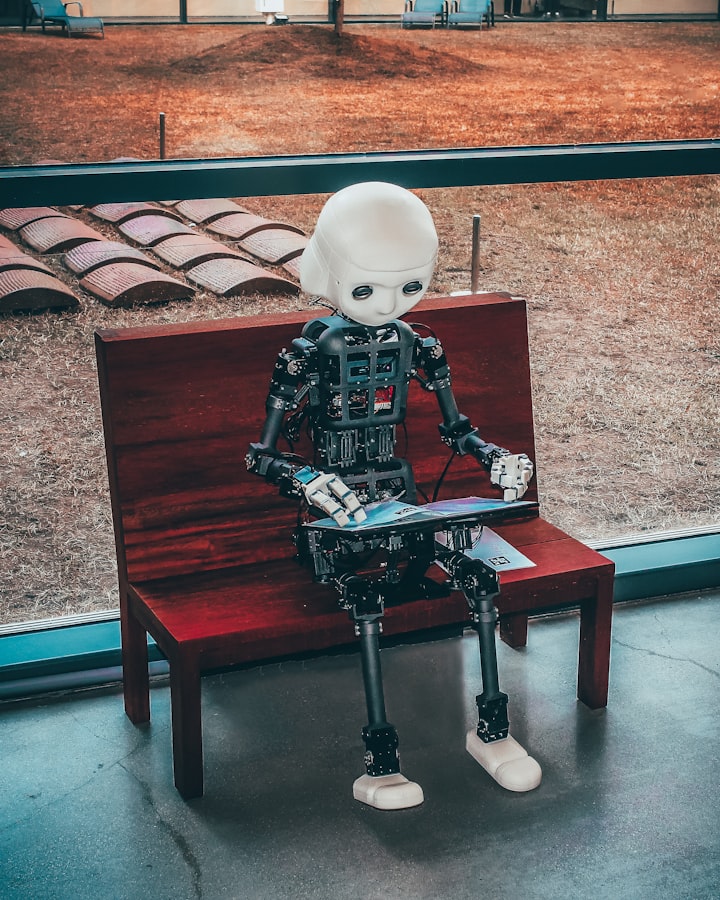AI Photographer: Redefining the Boundaries of Creativity and Efficiency in the Visual Industry
AI Photography and its Impact on Today's visual industry

- Introduction to AI Photography
In recent years, artificial intelligence (AI) has made significant advancements in various fields, including the visual industry. One of the most fascinating applications of AI in this realm is AI photography. By leveraging the power of machine learning algorithms, AI photographers are revolutionizing the way we capture and create visual content. In this article, we will explore how AI photography is redefining the boundaries of creativity and efficiency in the visual industry.
- How AI photography is redefining the visual industry
AI photography has emerged as a game-changer in the visual industry, pushing the boundaries of what is possible. Traditionally, photographers have relied on their artistic vision and technical skills to compose and capture stunning images. However, AI photography introduces a new dimension by harnessing the capabilities of machine learning algorithms to generate images that are not only visually appealing but also unique and original.
- Understanding AI-generated images of nothing
One of the intriguing aspects of AI photography is the ability to generate images of nothing. These images are not based on any existing data or real-world objects. Instead, AI algorithms analyze a vast dataset of images and learn the patterns and features that make an image visually appealing. Based on this knowledge, AI photographers can generate entirely new images that possess aesthetic qualities similar to those found in human-captured photographs.
- Benefits and limitations of AI photography
AI photography offers numerous benefits to photographers and the visual industry as a whole. Firstly, AI algorithms can process and analyze vast amounts of data much faster than humans, enabling photographers to save time and enhance their productivity. Additionally, AI photography can generate unique and creative images that might not have been possible through traditional means. However, it is important to acknowledge the limitations of AI photography. AI algorithms still struggle to capture the emotions and subjective elements that human photographers excel at capturing.
- The process behind AI photography
AI photography involves a complex process that starts with training the AI algorithms on a vast dataset of images. This training phase allows the algorithms to learn the patterns, styles and features that define an aesthetically pleasing image. Once the training is complete, the AI photographer can input parameters and specifications, such as desired colors, composition, and subject matter. The AI algorithms then generate images that align with these specifications, resulting in unique and visually captivating photographs.
- AI photographer vs. human photographer
The rise of AI photography has sparked debates about the role of human photographers in the industry. While AI algorithms can generate impressive images, there are certain aspects of photography that are unique to human photographers. Human photographers possess the ability to capture emotions, tell stories, and infuse their personal vision into their work. AI photography, on the other hand, excels in efficiency, speed, and the ability to generate large volumes of images. Ultimately, the collaboration between AI photographers and human photographers can lead to unprecedented levels of creativity and innovation in the visual industry.
- Examples of successful AI photography projects
AI photography has already produced remarkable results in various projects. For instance, AI algorithms have been used to create stunning landscape photographs that rival those captured by professional photographers. Additionally, AI photographers have successfully generated abstract and surreal images that push the boundaries of creativity. These projects demonstrate the potential of AI photography to redefine the visual industry and inspire photographers to explore new artistic possibilities.
- AI photography in various industries
The impact of AI photography extends beyond the world of art and extends into various industries. For example, in the advertising industry, AI-generated images can be tailored to specific target audiences, enhancing the effectiveness of marketing campaigns. In the fashion industry, AI photographers can generate virtual models and showcase clothing designs without the need for physical photo shoots. The versatility of AI photography makes it a valuable tool for businesses across multiple sectors.
- Ethical considerations of AI photography
As AI photography becomes more prevalent, ethical considerations arise. The issue of copyright and intellectual property rights becomes complex when AI algorithms generate images that resemble the work of human photographers. Additionally, the potential for manipulated images and deepfakes raises concerns about the authenticity and trustworthiness of visual content. It is crucial for the industry to establish ethical guidelines and regulations to ensure the responsible use of AI photography.
- The future of AI photography
The future of AI photography is promising, with advancements in technology continuously pushing the boundaries of what is possible. As AI algorithms become more sophisticated, we can expect AI photographers to produce even more realistic and visually stunning images. Additionally, the integration of AI with other emerging technologies, such as virtual reality and augmented reality, will open up new avenues for creative expression and immersive visual experiences. The future holds endless possibilities for AI photography, and it is an exciting time to witness its evolution.
- Conclusion
AI photography is redefining the visual industry by combining the power of machine learning algorithms with the creative vision of photographers. The ability to generate unique and visually captivating images has revolutionized the way we capture and create visual content. While AI photography offers numerous benefits, it is essential to recognize the limitations and ethical considerations associated with this technology. As AI photography continues to evolve, it will undoubtedly shape the future of the visual industry, inspiring new levels of creativity and efficiency. Embracing the collaboration between AI photographers and human photographers will lead to a harmonious balance that pushes the boundaries of creativity and innovation.





Comments
There are no comments for this story
Be the first to respond and start the conversation.